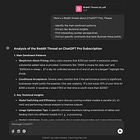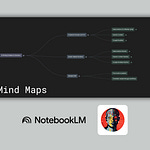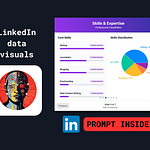Here's the thing about tech events like CES - they're overwhelming. While everyone else is struggling to piece together information from scattered sources, I've discovered a systematic way to extract exactly what matters using NotebookLM.
You know how it goes. A major keynote drops, and suddenly your feeds are flooded. There's the two-hour presentation you don't have time to watch, dozens of summary articles that all say the same thing, and endless discussions trying to make sense of it all. Most people either miss important details or waste hours trying to stay informed.
I've developed something better.
Instead of relying on basic summaries or trying to consume everything, I use NotebookLM to combine three specific types of content that give you the complete picture: the raw keynote transcript, unique analyst perspectives, and community discussions. Each plays a crucial role in understanding what really matters.
But here's what makes this approach different.
NotebookLM acts as your personal research assistant, helping you extract insights that you'd miss with traditional approaches. The key is how these three sources work together to give you a deeper understanding than any single perspective could provide.
In this guide, I show you exactly how this works. I've included a detailed video tutorial, but first, let's break down why this combination of sources is so powerful and how you can adapt it for any tech event you're trying to understand.
The power of three perspectives
Most people rely on a single source when trying to understand tech events - usually whatever summary article appears first in their feed. But here's what I've learned: the real insights come from combining three distinct perspectives that each serve a unique purpose.
Think about NVIDIA's recent CES keynote. You could read a summary, sure. But you'd miss the raw context from the actual presentation, the critical analysis that spots what wasn't said, and the collective wisdom of developers and enthusiasts picking apart every detail.
Here's why each piece matters:
1. The raw source: Your foundation
When you feed a keynote transcript into NotebookLM, you're not just getting timestamps and quotes. You're creating a base layer of knowledge that lets you verify claims, spot patterns, and catch details that summaries miss. This becomes your ground truth - especially important when everyone's racing to interpret what was said.
2. The analyst perspective: Critical context
I specifically look for articles with unique angles - not basic summaries. For example, while everyone was talking about NVIDIA's announcements, one analyst spotted something crucial: what wasn't announced. This second layer helps you understand market implications and read between the lines.
3. The community insight: Collective wisdom
This is where things get interesting. By feeding in structured community discussions (I'll show you exactly how in the video), you tap into the collective expertise of developers, industry insiders, and power users who spot implications that journalists miss. During CES, this revealed concerns about performance claims that weren't obvious from official sources.
Building your knowledge ecosystem
This is where NotebookLM really shines - it's not just about collecting these three sources, but creating a dynamic system that lets you explore and extract exactly what matters to you.














